This is a ‘built for Amdahl’ HP 1725A oscilloscope.
I bought this ‘scope maybe six+ years ago but just last year I noticed that there’s a curve tracer function tied to the intensity knob. The back states it’s an option ‘H01,’ which does not exist in any HP literature, and I couldn’t get any info from HP / Agilent. As far as I can tell there are no curve tracer specific inputs (option 101 includes the 1607A logic-state analyzer inputs), but if you look at the first photo, this was a unit built for amdahl.
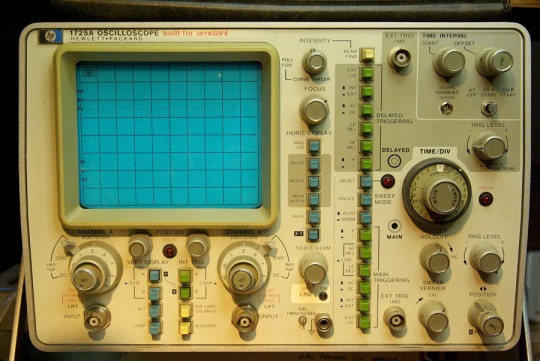
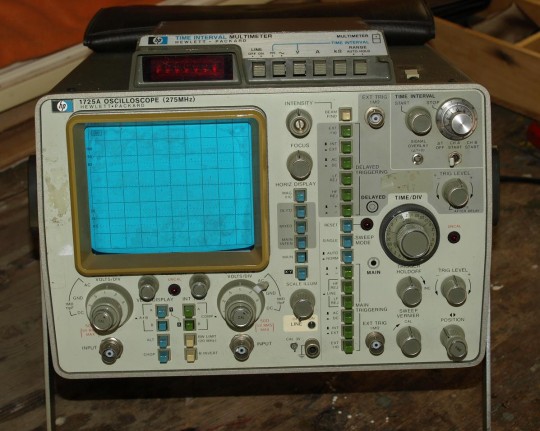
Pulling the intensity knob to enable the curve tracer mode, the line becomes a point, and it positions itself on the far left of the screen, one major division from the edge, and one major division below the horizontal zero line.
On the oscilloscope with the 101 option (1607A inputs), the Z input on the back has a sticker over it stating that it’s a 1697A input, while mine does not have this sticker. Another H01 ‘built for amdahl’ model shows the same sticker missing on the back; this is at least a bit of confirmation that the sticker on mine wasn’t peeled off!
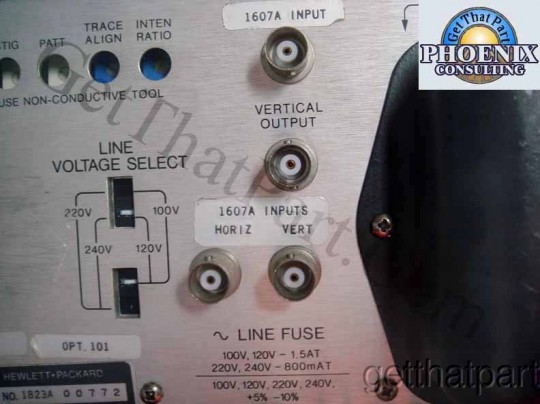
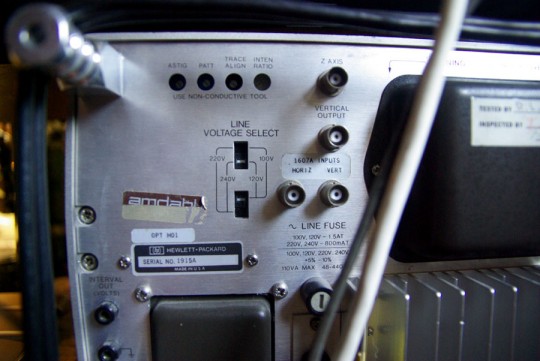
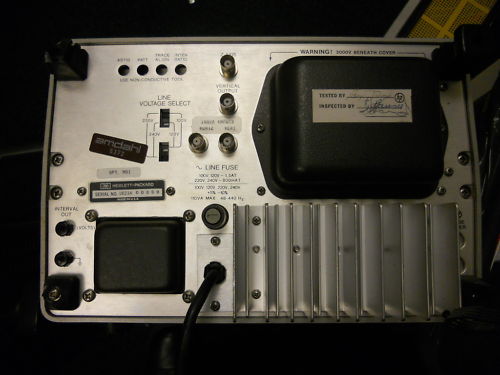
Another thing I noticed is that on the ‘normal’ (opt101) oscilloscope, the time interval area (top right) has a multi-turn potentiometer with what appears to be a vernier dial (labelled as ‘STOP’), while on my ‘scope and the other optH01 example, that appears to be replaced with a dual-concentric potentiometer (labelled ‘OFFSET’).
Another round of spot-the-difference and we find that the CAL test point on the bottom edge, in the centre, states ‘CAL 3V’ on a ‘normal’ ‘scope, and ‘CAL 1MHz/1uSEC’ on mine as well as the other amdahl unit on eBay, although I imagine that this is insignificant.
Curious if anyone out there on the internet has seen anything like this before or might know any HP engineers that were around when this was in development/production.
I’d love to know how I could use function! When I get my bench cleared off, I’ll tear it open and post some photos.
 About
About